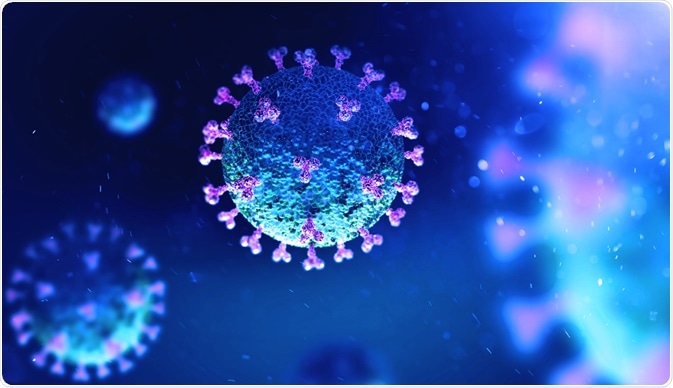
Herd immunity occurs when the majority of a population develops immunity against a contagious disease either through vaccination or due to a previous infection. This significantly reduces the likeliness of disease transmission from one person to another.

Image Credit: Lightspring/Shutterstock.com
What is herd immunity?
The development of herd immunity is an important way of gaining protection from contagious diseases, such as smallpox, measles, mumps, polio, and COVID-19. Once achieved, herd immunity can provide some level of protection even to non-vaccinated individuals primarily because of the significantly reduced chance of disease spreading within the community.
In other words, for a population where a considerable number of people are already immune, herd immunity can protect the vulnerable portion of the population by reducing the chance of physical contact between an infected person and a vulnerable person.
To develop herd immunity against a highly contagious disease, about 70% to 90% of a population needs to be immune. This is believed to be the threshold for herd immunity. However, depending on the severity of infection, the herd immunity threshold can be as low as 40%.
How is herd immunity developed?
There are two ways to develop herd immunity: vaccination and previous infection.
Vaccination
Vaccination is the best way to develop herd immunity as it can break the chain of infection. The level of herd immunity-based indirect protection is directly proportional to the number of vaccinated people within a community. In this way, it is possible to protect individuals who cannot be vaccinated, such as newborns, pregnant women, or immunocompromised patients (organ transplant patients; cancer patients receiving chemotherapy).
However, the indirect protection achieved through vaccine-based herd immunity can vary from one geographic location to another as it depends on two geographically variable factors such as vaccine efficacy and coverage.
There are some disadvantages to developing vaccine-based herd immunity. For some vaccines, the efficacy reduces over time, and people who fail to receive the booster dose may lose the benefits. Moreover, people who do not complete the entire course of a vaccine may remain unprotected against vaccine-preventable diseases.
In a population with a lower vaccination rate, outbreaks of vaccine-preventable diseases may occur. One of the main reasons for such outbreaks is the lack of herd immunity. Moreover, people who do not believe in vaccination frequently live in the same community, leading to a drastic reduction in the percentage of vaccinated people in that community.
If the percentage drops below the threshold of herd immunity, exposure to infectious disease can lead to the rapid spreading of the disease within the community.
Previous infection
Another way of developing herd immunity is having a previous infection. In this case, herd immunity can be achieved when a large portion of a population has been infected with and recovered from a contagious disease and subsequently has developed antibodies against the disease-causing pathogen.
For instance, people who recovered from the deadly influenza pandemic in 1918 eventually became resistant to the H1N1 influenza A virus.
However, the development of herd immunity through community infection can be risky if the antibodies developed against a pathogen fail to provide long-term protection. For example, in the case of COVID-19, it is still unclear if a previous infection with novel coronavirus is sufficient to protect a person from future infection. Studies have found that people who are previously infected with common coronaviruses can be re-infected with the same viruses after months or years.

Image Credit: Andrii Vodolazhskyi/Shutterstock.com
Is it good to achieve herd immunity for a disease without a vaccine?
To achieve herd immunity against a disease, a large portion of a population needs to be infected with and recovered from that particular disease, which can be a serious problem in case of highly contagious and deadly diseases that do not have any available vaccine.
For example, studies have suggested that to develop herd immunity and stop the pandemic, about 70% of the population in the United States need to be recovered from COVID-19. However, If the number of infected people increases rapidly within a short period, healthcare systems can be exhausted, and the mortality rate can increase drastically.
Moreover, the infection fatality rate is another important factor that goes alongside the herd immunity threshold in determining the risk of overall mortality for a disease. The infection fatality rate is an estimate of the percentage of deaths caused by a particular disease among all infected individuals, including those who are asymptomatic or remain undiagnosed.
Studies evaluating the significance of herd immunity for COVID-19 have suggested that with an estimated herd immunity threshold of 67% and infection mortality rate of 0.6%, the total number of expected deaths can exceed 30 million worldwide.
Thus, for a disease like COVID-19, developing herd immunity without having a vaccine can be devastating, particularly for countries with limited healthcare setups and/or a higher proportion of vulnerable populations.
Sources
- Mayo Clinic. 2020. Herd immunity and COVID-19 (coronavirus): What you need to know.
www.mayoclinic.org/…/art-20486808 - APIC. Herd Immunity.
https://apic.org/monthly_alerts/herd-immunity/ - John Hopkins. 2020. What is Herd Immunity and How Can We Achieve It With COVID-19?
www.jhsph.edu/…/achieving-herd-immunity-with-covid19.html - Randolph HE. 2020. Herd immunity: understanding COVID-19. Immunity. https://www.sciencedirect.com/science/article/pii/S1074761320301709
Further Reading
- All Coronavirus Disease COVID-19 Content
- What Mutations of SARS-CoV-2 are Causing Concern?
- What is the Clinical Impact of COVID-19 on Cancer Patients?
- Can Pets Get COVID-19?
- An Overview of the SARS-CoV-2 Vaccines
Last Updated: Jul 16, 2020

Written by
Dr. Sanchari Sinha Dutta
Dr. Sanchari Sinha Dutta is a science communicator who believes in spreading the power of science in every corner of the world. She has a Bachelor of Science (B.Sc.) degree and a Master's of Science (M.Sc.) in biology and human physiology. Following her Master's degree, Sanchari went on to study a Ph.D. in human physiology. She has authored more than 10 original research articles, all of which have been published in world renowned international journals.
Source: Read Full Article